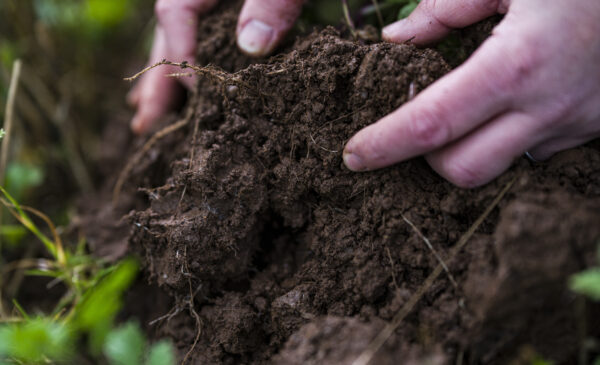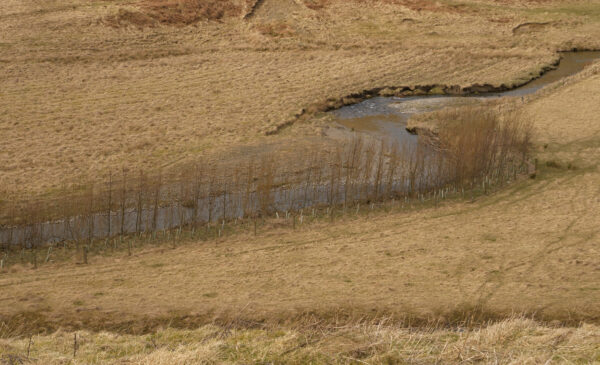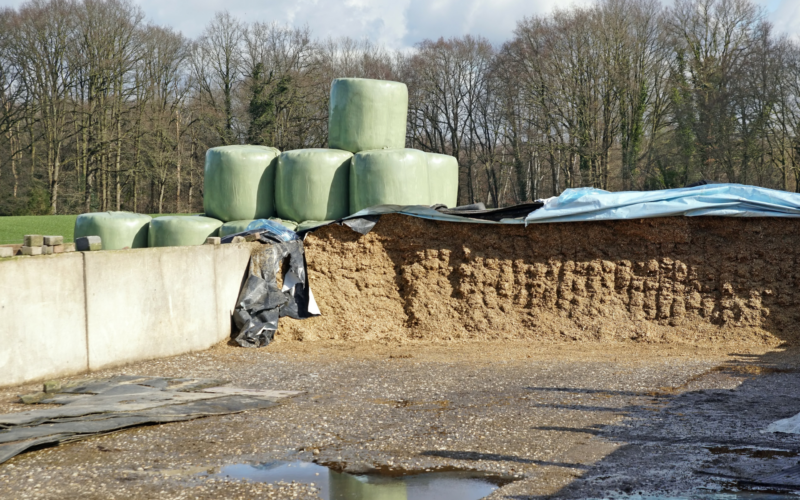With ever more volatile winter rain, problems around increased rainfall and slurry storage are quickly compounded.
October 2023 to March 2024 was the UK’s second wettest period on record. With increasing rainfall patterns predicted to become more frequent, farmers need to mitigate to ensure they remain compliant, utilise water on farm and have enough storage capacity for slurry.
Slurry is a valuable organic nutrient source, but it is also a highly polluting substance and can cause serious damage to our watercourses if not managed or applied correctly. Maximising nutrient uptake by crops and reducing the risk of diffuse pollution means applying slurry when the conditions are most favourable, essentially when the grass is growing. To help prevent slurry being applied at the wrong time unnecessarily, changes to the General Binding Rules (GBRs) were introduced. Farms that fall within Nitrate Vulnerable Zones (NVZ) must adhere to closed periods where certain fertiliser and organic manure cannot be applied to land within specific time frame. The Farm Advisory Service has produced a practical guide on The Need-to-Know on NVZ/’s.
The new GBRs stated that storage capacity for slurry produced by housed livestock must be sufficient for 26 weeks for housed pigs and 22 weeks for housed cattle. This is bringing the Controlled Activities Regulations (CAR) into line with NVZ requirements. This may result in some people having to increase the amount of storage they have available to meet these requirements. This is why it is important to consider and ideally avoid, unnecessary clean water entering the slurry storage system.
What can farmers do to reduce unnecessary clean water entering the slurry storage system?
There are simple things farmers can do to reduce water going into their slurry store and as a result potentially increase slurry storage capacity.
Regular farm maintenance
Regular farm maintenance can have an impact on slurry storage capacity. For example, check guttering, downpipes, and drains are functioning properly and that there are no leaks. Repair these where necessary. These seemingly minor actions can have a significant impact on preventing clean water entering slurry tanks.
Source of ‘clean’ water
Examine sources of ‘clean’ water around the steading and prevent them from mixing with contaminated areas. This will reduce the amount of water unnecessarily entering slurry stores. Getting a handle on rainfall and managing it in your yard can also go a long way. For example, rainwater from roofs or clean concrete areas could be diverted to surface water drains instead of filling up slurry tanks. It could also be collected and reused as part of water efficiency measures.
Questions to think about:
Is the drainage from each yard area going the right way?
Are the drainage systems coping with intense rain?
‘Lightly contaminated’ water
For ‘lightly contaminated’ water, which is classed as runoff from areas occasionally used by livestock; an outdoor midden containing farmyard manure; winter run-off from a silage pit once the clamp open and in use, can be treated and discharged through a Constructed Farm Wetland, where previously it would be classed as slurry or silage effluent.
Farmyard access
Improvements can be made by reorganising the farmyard to reduce the area of yard that livestock have access to. Keeping the yard free from manure will reduce the volume of dirty water or slurry to be collected. If slurry must be collected from the yard, switching to a high-pressure hose rather than a standard or volume washer for washing down will reduce the amount of water you need to deal with. Where practical, you could also scrape down surfaces to remove solid material before hosing down, which will also reduce the amount of dirty water to collect and store.
Roofing farmyard/ structures
Roofing or covering your farmyard area can reduce the volume of clean water falling onto your yard and ultimately your slurry store. The rainwater can be collected and utilised elsewhere on farm or easily diverted away from dirty yards and slurry systems.
Yard/steading repair
Ensuing the maintenance and quality of your yard can make significant savings and prevent clean and dirty water contamination. Make regular inspections of your steading to ensure drains are clear, cracks/puddles are not present and the steading is clean.
Covering slurry stores
Covering slurry stores also reduces the amount of rainwater reaching stores, in turn reducing the volume of slurry produced. However, covers are not suitable for every slurry store and may not be appropriate for older stores.
On farm: Low Balless AHDB Strategic Dairy Farm
AHDB Strategic dairy farm in Ayrshire—Low Ballees, manages dirty water through a constructed farm wetland (CFW) with clean water channelled directly to the nearby watercourse. This system allows the farm to manage dirty water on farm more efficiently with the additional benefit of providing a habitat for birds and waterfowl, while enabling water to be returned to the environment.
With a CFW you can discharge dirty water from the farm steading, taking pressure off existing slurry storage, meaning the farm can make best use of capacity they already have and increase the nutrient density of slurry stored.
Where should people go for advice?
If you are worried about your situation, you should look at the Farming and Water Scotland, The Farm Advisory Service and SEPA for further information and guidance on maximising slurry storage capacity.
The Scottish Government is currently updating their slurry calculator, to aid farmers in calculating 22-week storage requirement. In the interim please speak to your local advisor and they can assist you with these calculations.
Getting on top of slurry and manure management is the key to unlocking not just the value of those nutrients you don’t need to purchase but the full potential of your soil.

Related resources

Catchment Management Plans – why are they important?
Here Ann-Marie MacMaster, Land Use and Nature-Based Solutions Project Officer with The River South Esk Partnership explains more.
Catchment management plans bring together all aspects of the water environment. They take into account…

Sustaining Scottish soils
Sarah Buckingham, SAC Consulting
The importance of soils Soils underpin all nature-based systems, therefore, are vital in supporting Scotland’s…

Sustainable solutions to bank erosion: how trees can help protect Scotland’s riverbanks
Helen Reid, SEPA
Scotland’s rivers are facing increasing challenges due to more frequent and intense flood events. As…

